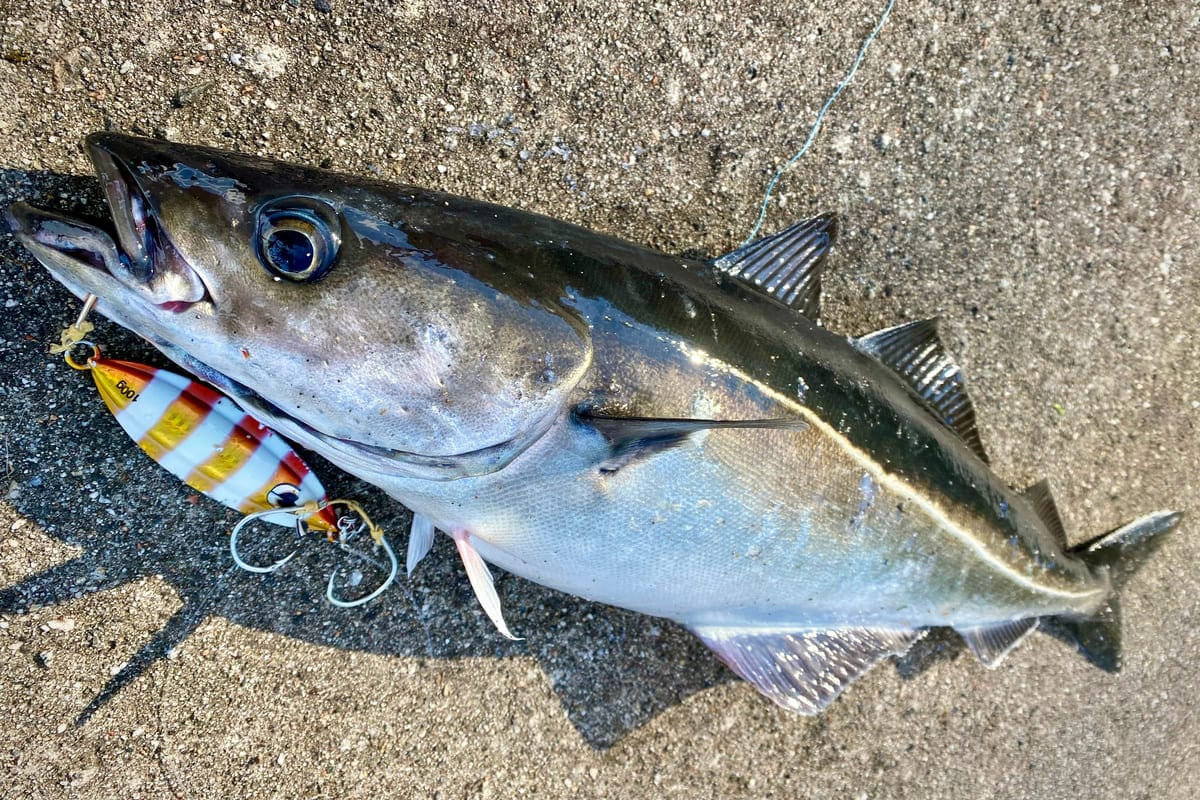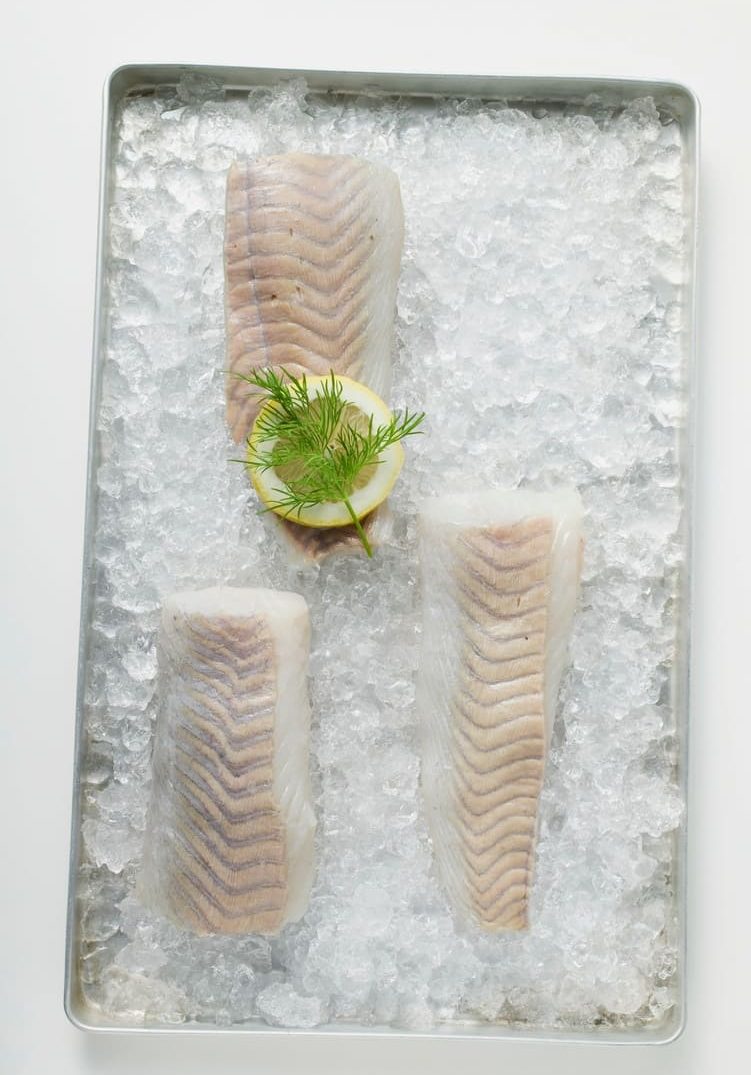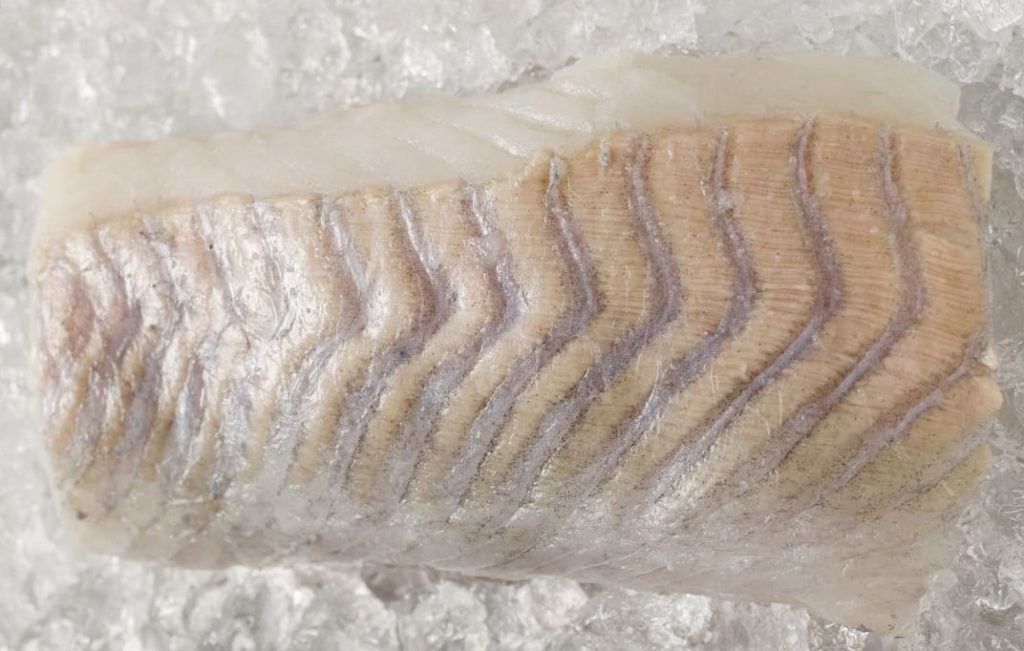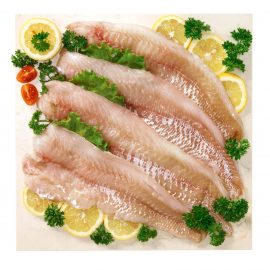
Introduction
Coley is a popular food fish of the Gadidae family, which includes cod and haddock. It can be found in waters off the coasts of Europe, the North Sea, and the Mediterranean Sea and has been consumed since medieval times. It is still a valued item in seafood markets and restaurants today, with its mild, sweet flavour.
Some prefer white fish flesh due to its cost-effectiveness and improved appearance. Generally, Coley is a low-fat, nutritious fish with essential fatty acids, making it a popular choice among diners.
Description
Coley, also known by its scientific name Pollachius virens, is closely related to the over 100 species of the Pollock family. With a distinctive, silvery greenish-grey back and silver-white underside, this relatively small fish can grow to a maximum length of approximately one meter and is typically found in the Atlantic Ocean and the North Sea’s temperate waters living at depths up to 350 meters.
It is a popular food source across many cultures, and its characteristic flavour – described as a cross between cod and haddock – has made it a favourite among seafood lovers.
Coley is a commercially-fished species and is widely consumed throughout the European market. It is a popular choice for both commercial fishing operations and recreational anglers, and its versatility allows it to be prepared in various ways, from baking to grilling.
Appearance and Composition
Coley’s form is quite ‘unique’ compared to other commonly eaten fish, like cod and haddock. Its head is slim and pointed, while its dorsal and ventral fins are elongated, giving it a ‘bottled’ shape. It has small teeth that point towards the throat and small eyes. Coley is an attractive dark green to black fish with smooth skin and a firm texture.
There is a marked difference between the size and shape of Coley and other fishes.
Habitat
Coley is found in temperate and subtropical saltwater. They prefer offshore sandbanks, coastal waters and near-shore reefs and can move inshore during the summer months to feed and migrate long distances during the winter in search of warmer temperatures and food.
Distribution of Stocks
Coley is abundant across the eastern Atlantic Ocean, from Norway to Angola, inhabiting estuaries and coastal waters with a preference for shallow waters with rock, sand or mud bottom.
Fishing Industries and Aquaculture
Coley is an important commercial species harvested traditionally on the North Sea coast and estuaries for centuries. The central fisheries for Coley take place in the United Kingdom, Iceland and Norway, but other fisheries worldwide have also begun to take an interest in Coley. In recent years, Coley farming and aquaculture have become increasingly popular to meet the higher demands for fish.
Population
Cooley can spawn more than once in a season, and the larvae of the species increase over a year and reach sexual maturity at age two. Unfortunately, the cooley population has become fragmented due to the effects of overfishing, pollution and habitat destruction, leading to a decrease in their populations in many areas of the world.
To protect Coley and help ensure their sustainability, some European countries have implemented minimum fishing sizes of 25 cm.
Sustainable Management
To balance the protection of Coley populations and ensure access to them for future generations, several strategies have been proposed to manage the species sustainably. Fisheries impose fishing quotas and total allowable catches (TACs) to regulate the exploitation of Coley, setting limits on the number of Coley that can be caught in a season and establishing the maximum number of fish that may be kept in a day.
In addition, closed seasons, area or depth closures, and minimum legal size requirements for landing or harvesting Coley are used to limit the availability of Coley in specific fishing grounds and protect the species in less-fished areas. Selective, environmentally friendly fishing gear such as traps and long lines that minimise the impact on the Coley population is also essential to promote sustainable fishing practices.

Stock Enhancement Projects
Stock enhancement projects, such as artificial Coley or aquaculture stockings, are also considered alternate ways to supplement natural populations. In contrast, their long-term success and impact on existing populations remain to be seen.
In addition to promoting responsible action and sustainable practices, it is essential to establish laws, regulations, and national policies to deter overharvesting of Coley, educate fishing communities, and protect Coley’s habitat from degradation and destruction so that the fishery can be sustainable.
Life Cycle of Coley
Coley follows a typical fish life cycle with four phases: egg, larva, juvenile, and adult.
Spawning occurs between March and June when the adults migrate to deeper waters before releasing their eggs. After fertilisation, the eggs drift to the ocean floor and hatch into larvae.
The larval stage typically lasts two to three weeks and depends on water temperature, leading to differences in size between coley of varying ages. Through developmental stages, the larvae gradually transition into the juvenile phase, where their body shape slowly changes from the oval-shaped form of larvae to the more elongated form of an adult.
After reaching maturity, the adults return to shallower waters to reproduce, restarting the life cycle.
Coley typically reaches maturity at around 6-8 months, with adults beginning to reproduce at 12 months. The typical lifespan of coley is 2-7 years, although some fish have been known to survive up to 10 years.
Coley’s Diet
Primarily Coley feeds on crustaceans, small fish and molluscs. These crustaceans include shrimp, crabs, krill, barnacles, isopods and amphipods, while their fish diet typically consists of herring, sardines and anchovies. Molluscs such as mussels, clams and squid are also important dietary components for this omnivorous species.
Coley has also been observed to take on larger prey items on rare occasions, such as jellyfish and cuttlefish. Plankton is the species’ primary food source, they usually feed on them during the night, and during the day, they focus on other kinds of prey, such as small-sized fish and insects.
Uses
Coley is a highly-prized fish and is an integral part of the fisheries in the North Atlantic and Mediterranean Sea and other areas with cold waters. They are typically caught with bottom trawlers or line fisheries and fished for commercial and recreational purposes. With their high-fat content, Coley is considered a delicate and tasty fish, regularly cooked and served in various dishes, including fried Coley, curry and other stews.
Nutritional Values
Coley is a rich source of essential nutrients, containing 14 grams of protein per 100g of fish and a significant amount of healthy omega-3 fatty acids (approximately 0.85g per 100g). It is also a good source of iron, vitamin B6, vitamin E and other B vitamins, as well as selenium, phosphorus and zinc.
In addition, it provides a range of antioxidants which help protect against cell damage.
Health Benefits
Coley’s essential vitamins and minerals make it an excellent choice for athletes and active individuals. The high protein content helps to repair muscle tissue, while the vitamin B6 content helps to increase energy levels.
Furthermore, the omega-3 fatty acids contained in the fish help to lower cholesterol and reduce inflammation. Coley also includes a range of trace elements and essential minerals, making it an excellent choice for those seeking to support their overall health.
Versatility
Coley is highly versatile and can be cooked in a variety of ways. It can be added to salads, soups, main dishes and fish cakes, roasted, poached, pan-fried, baked or grilled. It can be cooked in various tasty sauces, making it a popular choice for people wishing to try something new.
Taste and Texture
The flavour of Coley is the mild and sweet taste, with a slightly nutty aftertaste. Its texture can be compared to other types of whitefish like cod, pollock, and haddock.
It usually has no fishy taste, and its mild flavour and short shelf-life mean it is traditionally served freshly cooked. Coley can also be smoked, poached, grilled, or fried.

Preparing Coley for Cooking
Coley must be gutted, scaled, and washed before cooking, as proper preparation techniques will depend on the recipe. It can also be marinated in spices, herbs, or marinades for added flavour.
If grilling or pan-frying, the oil or skillet should be preheated for the best results, and when steaming, a steamer basket or steaming tray should be used.
During cooking, it is vital to turn the Coley regularly and cook until it flakes easily when prodded with a fork. Removing the skin and any sharp bones from the fish before cooking is essential to ensure even cooking and enhance the flavour.
Seasonings and Cooking Techniques
Common seasonings and accompaniments for this fish include lemon juice, herbs, butter, capers, and white wine. These ingredients combine well with Coley’s mild and sweet flavours and can be used in several ways. It is featured in many restaurants and can be cooked in an impressive range of dishes, from salads to stews.
Storing and Serving Coley
When not cooking, Coley should be stored in an airtight container and kept in the refrigerator for up to two days. Once cooked, it can be served with vegetables, salads, and other accompaniments and is sure to be a great addition to any meal.
Moist cooking methods such as steaming, poaching, and baking are best for preserving the delicate flavour of Coley. Dishes such as fish tacos and burgers should be coated in an egg and milk mixture and covered with a quality crumb or batter. Above all, it is vital to cook Coley thoroughly, as undercooked Coley can cause health issues.
Side Dishes
When selecting the suitable side dishes to pair with Coley, potatoes, rice, couscous, roasted vegetables, salads, and green vegetables such as broccoli and green beans, tomatoes, peppers and mushrooms all make for excellent accompaniments.
For lighter meals, serve Coley with a fresh salad or steamed vegetables and rice. Similarly, roasted garlic, roasted potatoes and vegetables, and mashed potatoes are all delicious sides to accompany Coley.
To enjoy a traditional Mediterranean meal, serve Coley with couscous and roasted peppers, tomatoes and onions.
Adding Flair to Coley Dishes
Herbs and spices, such as dill, oregano, and basil, help to enhance the flavour of the fresh fish, which also complements acidic components, such as lemon and lime.
Various sauces can also work well with Coley, including creamy dressings, tomato-based sauces, and spicy chilli.
Traditional and Popular Recipes
Coley has been popular throughout Europe and beyond for centuries. Popular recipes for Coley include fish pies, fish cakes, Coley burgers, pan-fried Coley fillet, smoked Coley, and Coley fish fingers.
Oven-baked Coley in cheese sauce is a popular traditional dish using Coley. Popular ways to cook Coley include poaching in milk with onion, bay leaves, and lemon, steaming, grilling, baking, or boiling in curries, soups, stews, broths, chowders, and stir-fries.
International Dishes
Coley is traditionally served in the UK with mashed potatoes and melted butter. However, in other countries, Coley is used in many popular dishes. From Portugal, for instance, dishes include pescada Z do Pipo and tiras de peixe acodegado, and from Spain, puerto gallega carne. From Italy, there is baccal con asparagi, from Cuba, daichiri, and from Costa Rica, chamorro de tiburon. Every culture has its way of cooking and serving Coley.
Conclusion
Coley has become a widely-loved member of the global fish family. As its demand grows, regulations, best practices, and research into its biology, ecology, and nutritional value have been developed to ensure responsible and sustainable utilisation. This provides Coley’s place as a critical, sustainable seafood choice and an essential contributor to a healthful diet.
